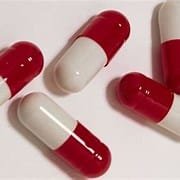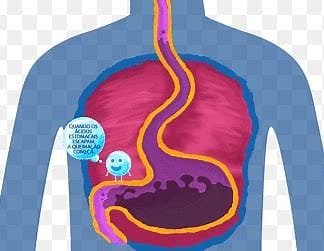Stomach pain is generally referred to as abdominal pain, and one can attribute any of the several causes of it, including indigestion, acid reflux, gastritis, peptic ulcers, or even stress. Thus, the type of medication depends on the cause. These drugs vary in terms of their chemical composition and action mechanism, and the selection of a particular drug is known to depend on the source of a patient’s discomfort. In this paper, we will discuss a number of most commonly used stomach pain medications, their formulation, as well as their mechanism of action in the alleviation of pain and discomfort.
1. Antacid Composition and Formulations

One of the most common over-the-counter antacids used in the cure of stomach pains is over-the-counter antacid. They work by neutralizing the stomach acids, relieving pain associated with heartburn and acid reflux. Other forms that come under the same category of antacids include liquids and chewable tablets or tablets.
Active Ingredients
Common
Aluminum hydroxide
Magnesium hydroxide
Calcium carbonate
Sodium bicarbonate
Action Mechanism
Antacids increase neutrality by neutralizing the excess hydrochloric acid (HCl) in the stomach, thereby alleviating the acidity of the stomach, which soothes the stomach linings. They work fast; usually the symptoms may be relieved in under a minute or seconds. Their action is short-lived and is prescribed for mild to moderate patients.
Brand Names
Tums (calcium carbonate)
Maalox (aluminum hydroxide and magnesium hydroxide)
Rolaids (calcium carbonate and magnesium hydroxide)
Alka-Seltzer (sodium bicarbonate)
2. H2-Receptor Antagonists (H2 Blockers)
Formulation and Types
Another type of drug that reduces the production of stomach acid is H2 blockers. H2 blockers work on the stomach by inhibiting histamine receptors, which activate acid release.
H2 blockers are available over the counter as well as on prescription and come both in tablet and liquid form.
Ingredients
Ranitidine (Zantac), Famotidine (Pepcid), Cimetidine (Tagamet)
Nizatidine (Axid)
Mechanism of Action
H2 blockers act by inhibiting the activity of histamine on the H2 receptors in the stomach and thus reducing gastric acid secretion. They take longer to act than antacids but have a more prolonged action, thus making them a great drug for the management of recurrent stomach pain caused by ulcers, GERD, and chronic gastritis.
Brand Names
Zantac (ranitidine)
Pepcid (famotidine)
Tagamet (cimetidine)
Axid (nizatidine)
3. Proton Pump Inhibitors (PPIs) Preparation and Types

Proton pump inhibitors are a stronger class of acid-reducing drugs than H2 blockers. They are employed in treating more severe stomach pains, GERD, peptic ulcers, and Zollinger-Ellison syndrome. PPIs come both in tablet and capsule forms, and sometimes liquid suspensions.
Common Ingredients
Omeprazole (Prilosec)
Esomeprazole (Nexium)
Lansoprazole (Prevacid)
Pantoprazole (Protonix)
Mechanism of Action
PPIs are essentially developed from the inhibitor principle for the action of the proton pump, an enzyme located in the gastric lining at the terminal step of acid formation. It greatly diminishes the production of acid by the stomach once the blocking of the action of this enzyme is established. These medicines are typically recommended for long-term cases and can be up to a few days before the full effect of the drug is observed.
Brand Names
Prilosec (omeprazole)
Nexium (esomeprazole) Prevacid (lansoprazole) Protonix (pantoprazole)
4. Antispasmodic Formulation and Types
It is used for the treatment of stomach aches when they are caused by spasms of muscles in the gastrointestinal tract. This is very common in the syndrome known as irritable bowel syndrome. Spasmodic drugs act by dilating smooth muscles in the gut, thus an alleviation of pain and cramp caused by spasms is provided.
Common Active Ingredients
Hyoscine butylbromide (Buscopan) Dicyclomine (Bently) Mebeverine (Colofac)
Mechanism of Action
Antispasmodics relax the muscles in the walls of the stomach, thus minimizing spasm or contraction that creates painful sensations. They are mostly useful for the treatment of pain in the stomach caused by functional disorders such as IBS, where spasms of the gut muscles lead to cramping and discomfort.
Brand Names
Busco pan (hyoscine butyl bromide)
Bently (dicyclomine)
Colofac (Mebeverine)
5. Antibiotic Formation and Types
In the case of a bacterial infection such as an Helicobacter pylori or H. pylori infection causing stomach pain, antibiotics are used. These medications have been used to treat the infection, which is associated with peptic ulcers and gastritis.
Active Ingredients Clarithromycin
Amoxicillin
Metronidazole
Tetracycline Action
They work directly against the actual bacteria causing the infection. For H. pylori, usually, there is a combination of two antibiotics taken with a PPI, which reduces the stomach acid and heals the stomach lining. The normal treatment would last 10–14 days.
Brand Names
Biaxin (clarithromycin)
Amoxil (amoxicillin)
Flagyl (metronidazole)
Tygacil (tetracycline)
6. Prokinetics Formation and Types
Prokinetic agents enhance the motility in the digestive system, which can be advantageous for patients experiencing pain in the stomach due to slow gastric emptying or those who suffer symptoms of GERD. Prokinetic medication enhances the movement of the content in the stomach and intestines.
Common Ingredients
Metoclopramide (Reglan) Domperidone (Motilium) Cisapride
Mechanism of Action
Prokinetics increase the stomach and intestines’ contractions and encourage food movement through the digestive system. This may also alleviate symptoms such as bloatedness, pain, or discomfort resulting from delayed gastric emptying or acid reflux.
Brand Names
Reglan (metoclopramide)
Motilium (domperidone)
Propulsid (cisapride)
Conclusion

The ideal medication for stomach pain varies by cause, severity, and duration of the symptoms. Though antacids, for instance, do exist and can easily be used to get quick relief against mild indigestion and acid reflux, more chronic conditions involve GERD and peptic ulcers requiring H2 blockers and PPIs. Functional disorders like IBS use antispasmodics and prokinetics, and antibiotics are prescribed for bacterial infections such as H. pylori. It would always be best to get in touch with a doctor to get an accurate diagnosis and treatment process, because the chronic use of some of these drugs is also known to trigger certain side effects.



